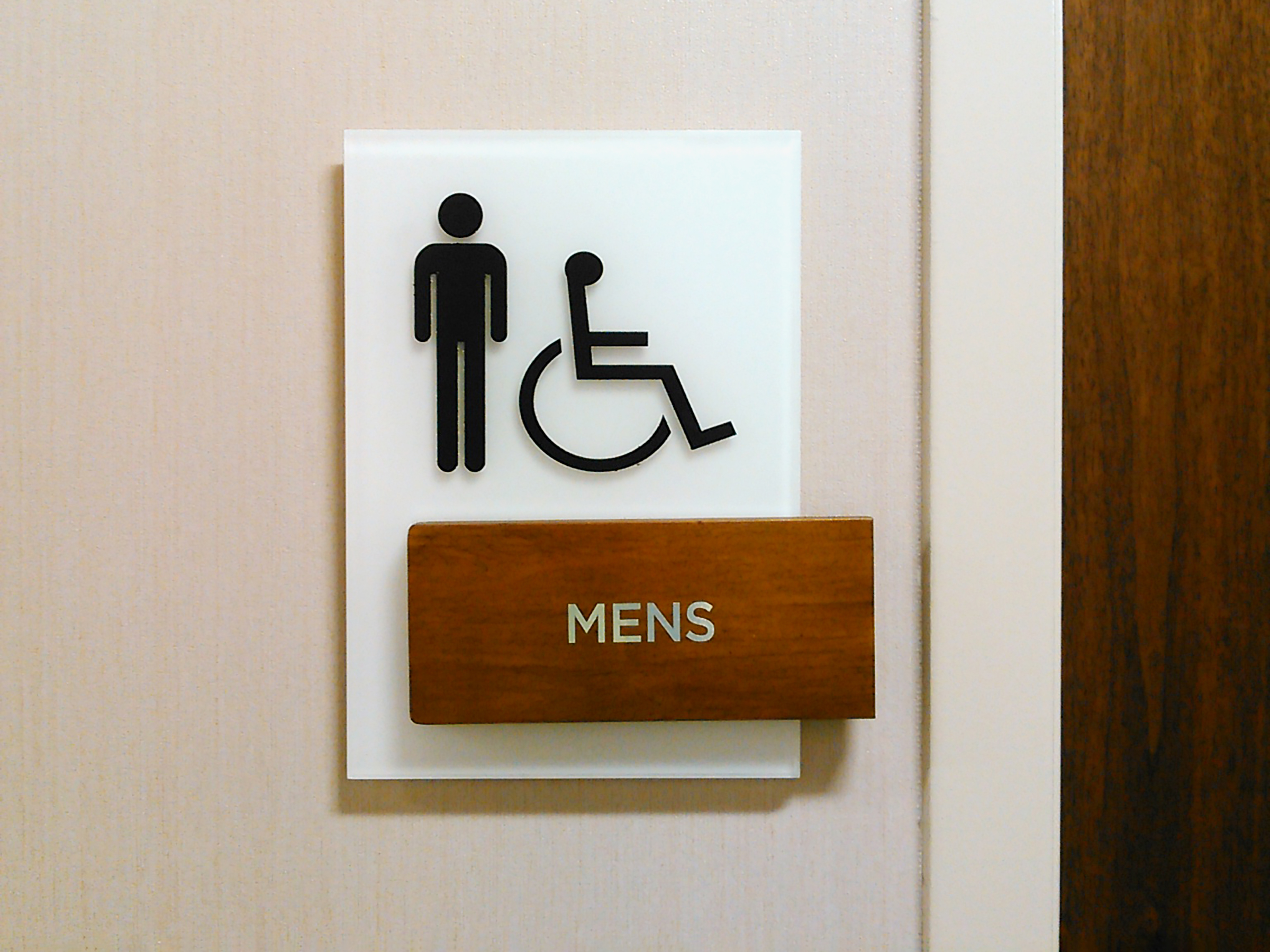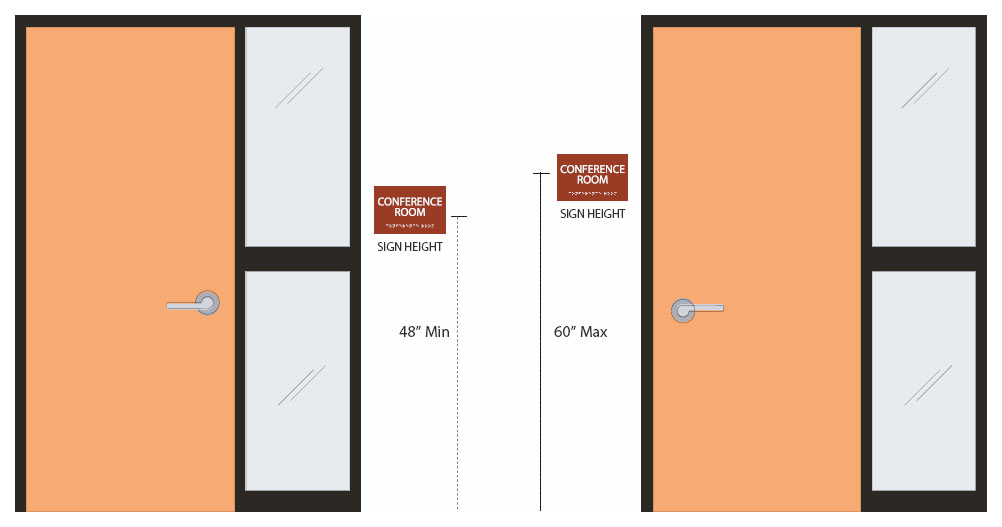Exploring the Key Attributes of ADA Indicators for Boosted Availability
In the world of accessibility, ADA indications serve as silent yet effective allies, ensuring that areas are navigable and inclusive for individuals with handicaps. By integrating Braille and responsive elements, these indications damage barriers for the visually impaired, while high-contrast color schemes and readable fonts cater to varied aesthetic needs.
Value of ADA Conformity
Guaranteeing conformity with the Americans with Disabilities Act (ADA) is important for cultivating inclusivity and equal gain access to in public areas and offices. The ADA, enacted in 1990, mandates that all public facilities, employers, and transport solutions suit individuals with impairments, ensuring they take pleasure in the very same rights and opportunities as others. Compliance with ADA requirements not only satisfies lawful commitments yet also enhances an organization's track record by demonstrating its commitment to diversity and inclusivity.
Among the crucial facets of ADA conformity is the execution of obtainable signs. ADA indicators are designed to ensure that individuals with disabilities can easily navigate via structures and rooms. These indications should adhere to particular guidelines regarding size, font, shade comparison, and positioning to ensure exposure and readability for all. Correctly executed ADA signage aids remove obstacles that people with disabilities frequently encounter, thereby advertising their self-reliance and confidence (ADA Signs).
Moreover, sticking to ADA policies can minimize the danger of prospective penalties and legal effects. Organizations that stop working to follow ADA standards may encounter claims or penalties, which can be both monetarily challenging and harmful to their public photo. Hence, ADA conformity is important to fostering a fair environment for everybody.
Braille and Tactile Components
The unification of Braille and tactile aspects right into ADA signage symbolizes the concepts of ease of access and inclusivity. These attributes are important for people who are aesthetically impaired or blind, enabling them to browse public rooms with greater self-reliance and self-confidence. Braille, a tactile writing system, is vital in giving written info in a layout that can be conveniently perceived with touch. It is commonly placed below the matching message on signs to ensure that individuals can access the info without aesthetic aid.
Tactile elements expand past Braille and consist of elevated signs and characters. These components are designed to be noticeable by touch, permitting people to determine room numbers, restrooms, leaves, and various other important locations. The ADA sets specific guidelines concerning the dimension, spacing, and positioning of these tactile elements to maximize readability and make sure consistency across various atmospheres.

High-Contrast Color Plans
High-contrast color design play a critical function in boosting the visibility and readability of ADA signs for individuals with aesthetic disabilities. These systems are necessary as they optimize the difference in light reflectance in between text and history, ensuring that indications are easily discernible, also from a distance. The Americans with Disabilities Act (ADA) mandates the usage of particular shade contrasts to accommodate those with restricted vision, making it a crucial element of conformity.
The effectiveness of high-contrast shades lies in their capability to stand out in different lights conditions, consisting of poorly lit environments and locations with glow. Generally, dark message on a light history or light text on a dark background is employed to accomplish optimal contrast. For example, black message on a yellow or white background supplies a raw visual difference that helps in fast acknowledgment and comprehension.

Legible Fonts and Text Dimension
When taking into consideration the design of ADA signage, the choice of clear font styles and proper message dimension can not be overemphasized. These components are crucial for guaranteeing that indications come to individuals with visual disabilities. The Americans with Disabilities Act (ADA) mandates that font styles need to be not italic and sans-serif, oblique, manuscript, extremely ornamental, or of unusual type. These requirements help ensure that the text is easily readable from a range which the personalities are appreciable to diverse audiences.
According to ADA standards, the minimum message height must be 5/8 inch, and it ought to raise proportionally with checking out distance. Uniformity in text size adds to a cohesive aesthetic experience, helping people in navigating settings effectively.
In addition, spacing between lines and letters is essential to readability. Sufficient spacing prevents characters from showing up crowded, enhancing readability. By sticking to these standards, designers can dramatically improve access, guaranteeing that signs offers its intended function for all people, no matter their visual capacities.
Effective Placement Approaches
Strategic placement of ADA signage is important for maximizing ease of access and guaranteeing compliance with legal criteria. ADA standards state that signs should be mounted at an elevation in between 48 to 60 inches from the ground to ensure they are within the line of sight for both standing and seated people.
Additionally, indications must be positioned nearby to the latch side of doors to permit simple identification prior to entry. Uniformity in indication placement throughout a center improves predictability, lowering complication and read this post here improving general user experience.

Conclusion
ADA signs play an important role in promoting accessibility by integrating attributes that resolve the demands of people with handicaps. These components jointly cultivate an inclusive atmosphere, underscoring the significance of ADA compliance in ensuring equivalent accessibility for all.
In the world of ease of access, ADA signs serve as quiet yet effective allies, guaranteeing that spaces are inclusive and navigable for people with specials needs. The ADA, passed in 1990, mandates that all public facilities, companies, and transport services suit people with impairments, guaranteeing they appreciate the exact same rights and possibilities as others. ADA Signs. ADA indications are developed to ensure that people with impairments can easily browse through spaces and structures. ADA guidelines specify that indications need to be installed at a height in between 48 to 60 inches from the ground to ensure they are within the line of view for both standing and seated individuals.ADA indications play a vital duty in promoting access by integrating attributes that deal with the demands of individuals with handicaps
Comments on “Understanding the Regulations Behind ADA Signs”